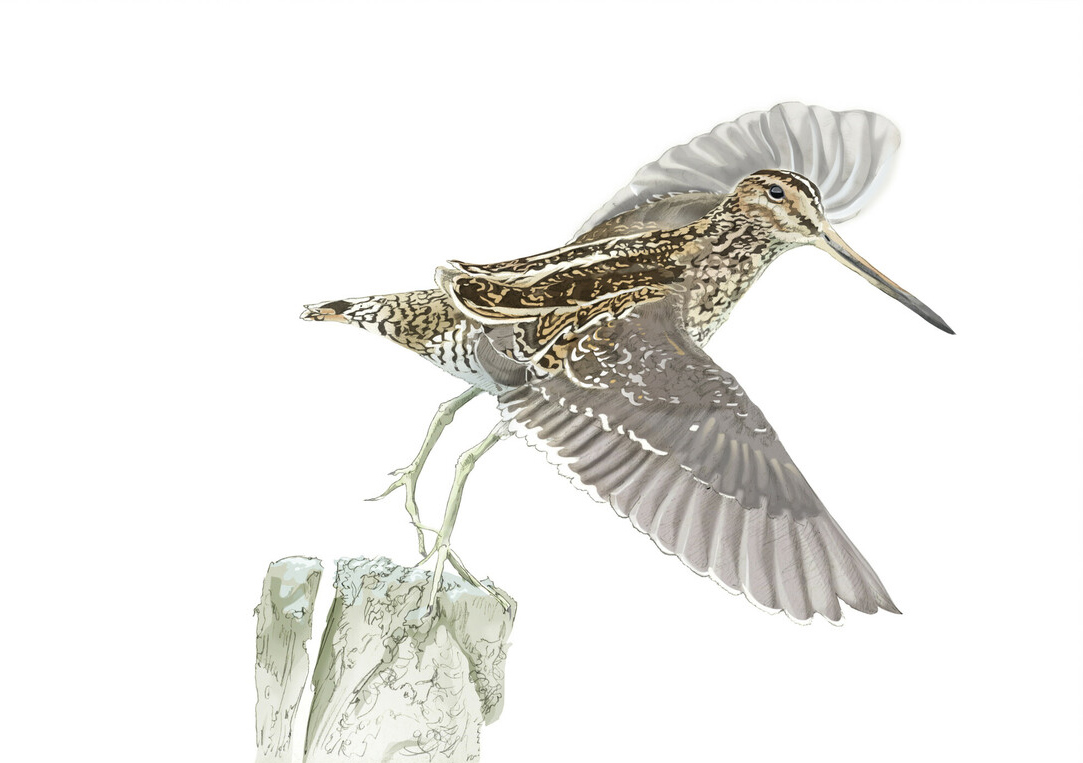
Gallinago gallinago
Marshes, boggy moorland, estuaries.
The snipe is a dumpy, round looking wading bird with rather short legs and an incredibly long straight beak, almost as long as its body. Its long beak makes it easy to recognise, unless it is hidden or camouflaged in tall grasses. It is between 25cm and 27cm in length, with brown feathers which have a beautiful pattern of black and white lines. The snipe also has very dark lines on its head. When disturbed snipe make a ‘kreech’ call and fly away in a haphazard direction before dropping down to safety. When looking for a mate, a snipe performs a flying and drumming display, and makes a humming sound by vibrating its tail feathers together.
The snipe’s very long, straight beak has a flexible tip and is used to probe soft ground for worms, beetles, insect larvae, snails and woodlice. It uses a jerky, vibrating action to suck up its prey without having to remove its beak from the mud. Snipe are ground-nesting birds, and often build their nests at the base of a clump of rushes near to water. The nest is a shallow cup lined with grass. The female lays four eggs between March and May and keeps them warm for about 3 weeks until they hatch. Then both parents help to feed the chicks for another 3 weeks until they can look after themselves.
Snipe that live all year round in Britain are joined in winter by snipe visiting from northern Europe. The number of resident snipe in Britain has dropped over the last few decades, partly due to the loss of suitable marshy habitats.
The wetlands on the North York Moors are a vital habitat for many other ground-nesting birds as well as snipe. The National Park Authority is working with land managers, farmers and other organisations to improve the moorland habitat for these birds and other wildlife. Like all ground nesting birds on the moors, snipe are easily disturbed by people and dogs. You can help by keeping your dog on a lead and avoiding getting too close to nest sites.